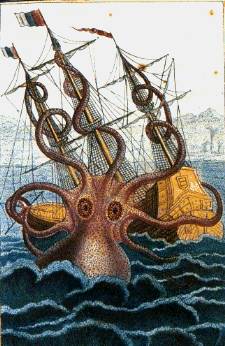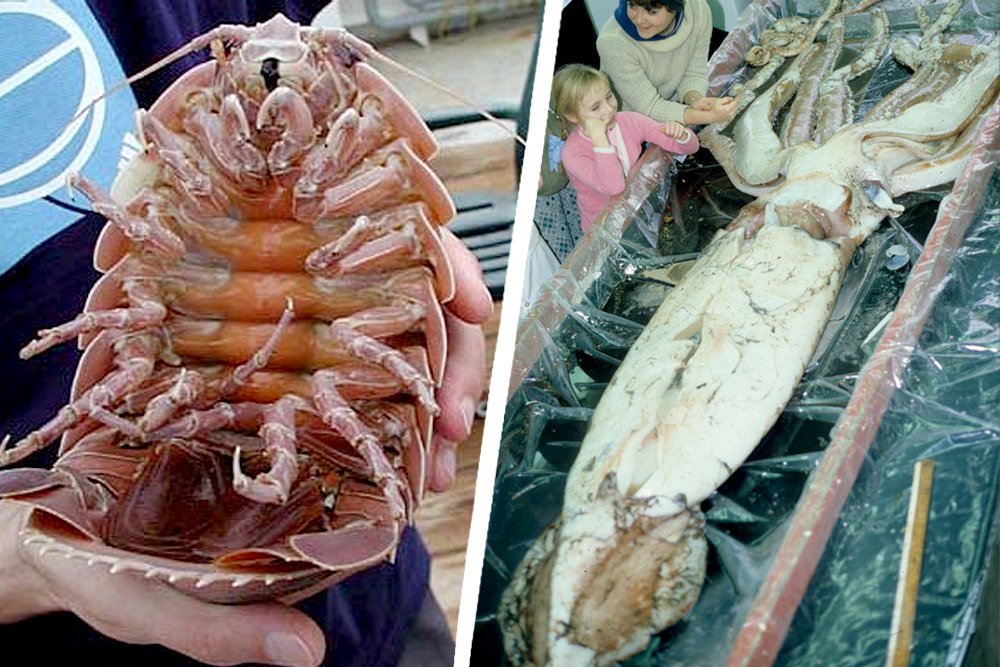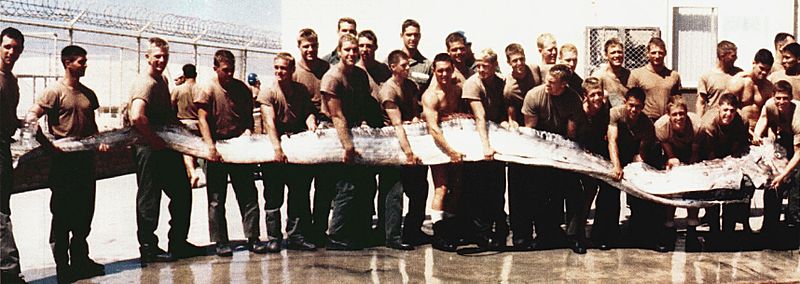Table of Contents (click to expand)
Some creatures in the deep sea grow to enormous sizes because they have adapted to their environment. They have evolved to be larger in order to survive in the deep waters.
Humans have populated most of the earth’s landmass, but have still been largely separated from significant portions of this world. Oceans contain around 96.5% of all Earth’s water. An estimated 50-80% of all life on Earth is found under the oceanic surface. Since all living organisms cannot live in harmony (a reference to “the survival of the fittest”), they have learned to live in their own suitable spaces. Wide varieties of organisms can be found under the world’s waters, inhabiting different levels of our oceans. Millennia of evolutionary processes have helped them adapt to their surrounding environment, which has lead to variations in the physical structuring of many such creatures. The earliest of our ancestors, in fact, is believed to have evolved from marine animals. The possibilities of evolution are truly endless!
The folklore of giant sea monsters has baffled humans for centuries. The Hydra, Kraken, Nessy, Leviathan and so many more have been the result of these camp-side tales. Self-employed explorers and adventurers have spanned the globe, in search of such creatures, but to their dismay, no such majestic beasts have been discovered. What has been found are other incredible marvels of nature, even if they’re not sea monsters!

Are Massive Creatures Mistakes?
Well, the answer to this question depends on your perception. Humans tend to be amused by creatures that span to the extremes of sizes. The tiny bee hummingbird of Cuba is much more appreciated than a common homing pigeon, just as the sight of a majestic blue whale is much more appreciated than a much smaller tuna fish. This is why ancient mythologies tend to be amusing, but in the above cases, none of the creatures can be deemed as a “mistake” because all of them, in their own ways, have evolved to adapt and blend into their environment. The same is true in the case of our giant sea crab, giant Pacific octopus and deep sea isopods.
The question is…. Why are they bigger?
The answer is Deep Sea Gigantism.

Also Read: Why Are Marine Mammals, Like Whales, Larger Than Land Mammals?
Deep Sea Gigantism
The deeper down below the ocean waves you go, the weirder things get. A lack of sunlight reaching the lower depths of the ocean bed causes the temperatures to fall drastically. This leads to increased cell size and an extended life span of organisms living in such conditions, which results in the continual growth of body size throughout their lives.
Due to a lack of oxygen at greater depths, these creatures have minimal food sources, which leads to a slower metabolism rate, helping them to conserve energy. They do not need to regulate their body temperature, and can thus utilise that energy in other bodily processes. This is another factor behind their increased body sizes.
So why can’t these creatures be hunted for food? Logically, they would provide more mass for the weighing scales in a seafood shop, rather than their shallow-water counterparts. The simple answer to this question is a resounding “No”. There is an incredible amount of funding required to carry out deep sea missions, let alone deep sea fishing!

Also Read: Can Humans Live Underwater?
Can Those Deep Sea Creatures Survive In Shallow Waters?
If they could have, they would already be there.
The separation of habitats has to do with hydrostatic pressure, which is experienced by all marine creatures. As the depth of the sea increases, so does the pressure. This would mean that organisms with gas-filled chambers (like us), would be crushed to death when exposed to extreme pressures at such depths. That’s why deep sea divers wear special, pressure-equalising dive suits.
To adapt to such great pressures, deep sea creatures are largely water-based and have minimal or no air gaps in the body. Water, being in-compressible, leaves their bodies unaffected by such great underwater pressure. However, this comes with its disadvantages. If these creatures were to try and ascend towards the water surface, the dissolved gases in their bloodstream would grow less soluble with decreased pressure. Bubbles would start forming in their blood vessels (gas embolism), causing their bodies to swell up and explode.
A painful end indeed.
Also Read: Why Do Deep-Sea Fishes Not Get Crushed By Pressure On The Sea Floor?
Conclusion
Deep sea giants are living proof of evolution by adaptation. The deep waters form a world of their own, with deep sea vents and volcanoes, underwater rivers and lakes, seamounts and underwater caves. Our Earth is teeming with life, in every corner and at every depth. Some of the most spectacular light shows on the planet can be seen in the deepest parts of the ocean. From glowing corals to lantern fish and comb jellies to barbeled dragonfishes, these creatures have taken the art of surviving in harsh conditions to the next level.
It’s truly amazing to think that there is such a plethora of life lurking out there, in the deep waters, completely unaware of each other’s existence. As we continue to dive deeper and deeper, probing the unknown parts of our planet, we expect to find countless more strange and fascinating creatures that have yet to be discovered and understood!
How well do you understand the article above!

References (click to expand)
- How Much Water is There on Earth? | U.S. Geological Survey. The United States Geological Survey
- Did You Know...? Marine Life / Ocean Facts.... marinebio.org
- Revealing the Largest Octopus | Smithsonian Ocean. The Smithsonian Institution
- How does pressure impact animals in the ocean?. The Office of Ocean Exploration Research
- Gordy, S., & Rowell, S. (2013). Vascular air embolism. International Journal of Critical Illness and Injury Science. Medknow.
